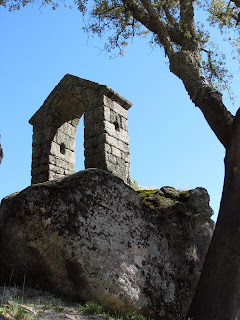День 79. Монсанту Монсанту... Здесь остановилось не время, а камни. Они двигались, сталкивались, разговаривали и внезапно замерли, застыли... "He is looking for another kind of stone, the kind that has never seen a chisel, or if it has, still bears the scars proudly. He won’t be in Monsanto long enough to know how much of the stone has entered its people; but he thinks he will be able to understand what they gave to stone. To judge the former, he would have to stay; for the latter, he can move on. He heads for the summit. Between the last house and the walls of the castle there is an almost untouched realm of huge boulders, the barrocos, vast empty spaces which could fit a whole city of rocks, ad above all these, four huge boulders, on of them almost completely buried in the ground, which serves as a base for two others at its ends, and balanced on top an almost perfect sphere, like a satellite fallen to earth. The traveler thought he had seen all there was to see regarding stone




